For a couple seasons now, one of my fly shop co-workers, Bucky McCormick, has gone retrograde with his flies. He’s been tying and fishing classic patterns. By classic I mean older flies with some degree of historical significance, like the Quill Gordon, Brown Bivisible and Black-Nose Dace. Patterns that practically nobody fishes these days—if they’ve even heard of them at all—especially out here in Montana. (Last time I used one myself was in the early 1980s, gulper fishing on Hebgen Lake. My fly of choice then was a #16 Adams—a classic and a good imitation of a Callibaetis mayfly.) Bucky’s decision to shun modern flies in favor of the classics is far from a judgment regarding their effectiveness. Rather, it’s a statement about their beauty. Or lack thereof. With an emphasis on unconventional form and a reliance on synthetic materials, Bucky finds modern flies lacking in both grace and elegance. To him, they’re simply…ugly. And having fished for decades, he’s arrived at a point in his angling career where ugly no longer works for him. He sees beauty in the classics, a beauty which matters.
I find this concept quite interesting. It prompted me to ask him if he thought the beauty in a classic fly was intrinsic to the fly itself, or whether it lay strictly in the eye of the beholder. He replied that it was inherent in the flies themselves: beauty as a product of both design and the employment of all-natural materials. I told him I wasn’t as certain about that, and decided to argue the other side.
A Quill Gordon, I proffered, acquired its shape because it was nothing more than a knock-off of 19th-century English mayfly design. Beauty never entered the equation as a design concern—on either side of the Atlantic. Function and form drove design. As for the use of natural materials, well, the tiers of old had little choice: organic was pretty much their only option. So I argued that the conception of beauty in a Catskill dry fly—or, for that matter, any other classic fly—simply depended on when a person arrived to the sport.
Anglers old enough to have been exposed to classic flies at a young age, or when they were still widely fished, tend to consider them in aesthetic terms. They use words like “pretty” and “beautiful” when describing a fly. Younger anglers think differently. They aren’t nearly as apt to describe or draw a distinction between flies based on aesthetic concerns.
Bucky wasn’t buying it. Truth be told, I’m not sure I was, either. Because deep down inside, I see and feel the same things in the classic patterns that he does. The stylish lines of a Catskill dry fly, the flair in a well-tied Henryville Special, the elegance of a sleek, antediluvian bucktail streamer—they’re all beautiful to me, too. But unlike Bucky, I’m not sure I can trust my judgment. I’ve been fishing for a long time too, and I’m suspicious my views are unduly colored by a romanticism rooted in those many years of experience. I question whether I’m truly capable of escaping that experience to make an unbiased judgment. And so while Bucky harbors no doubts, I’m left to wonder, still, where does the beauty in a fly lie?
Readers?




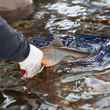






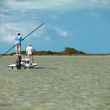


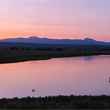
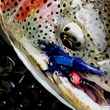



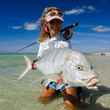




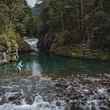
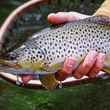



Comments
Arthur Strauss replied on Permalink
I, also, find tying the traditional English/Irish fly patterns more satisfying. I just came back from Patagonia where I caught most of my trout on an Irresistible Adams. Go figure!
WJS replied on Permalink
This article would be much better if you included pictures of the flies that you are talking about. It is essentially an art piece yet you don't include the art....
splitcane replied on Permalink
Hear, hear! An article on classic patterns with exactly one picture...of a modern pattern? Egads!
Ryan replied on Permalink
Nice read. Thanks.
I've flyfished for years, but have only tied for about a year and absolutely love it. Since starting I've asked myself a similar question, less about the visual aesthetic and more about the source of materials. In my humble opinion... natural materials seem, well, more natural and help form a connection with the outdoor experience. I find myself constantly on the lookout for materials during hikes, and view my deer and bird hunting as opportunities to collect fur and feathers. In that, they are more beautiful. Furthermore, every time I wrap my synthetic fly around a branch and snap it off, I'm adding more plastic to the stream. I'm a hypocrite, of course, because I tie and fish both. Synthetics are definitely effective!
Another question I consider... do video learning libraries undercut the beauty? I use online videos to learn lots of new patterns and wonder how tiers learned before youtube?! It seems that much more time, energy (and materials!) went into becoming a tier before the internet. I imagine the hard-earned skills that tiers developed from books, practice and ingenuity provided a greater level of satisfaction, adding to the beauty of the experience.
Thanks again for the article.
DLJ replied on Permalink
I think I appreciate the most about the classic flies is the effort and experimentation that went into finding the best material to achieve the imitation they sought. As you mention, years ago before the development of so many synthetic materials, tiers had to find the right natural material to create their imitations. For example, stripping the herl from a peacock barbule and wrapping it around the shank to get that striped, segmented body. Or finding the flank feathers from a wood duck to get that tiny black & tan mottling effect in Cahills. Or teal flank to get the same effect on Callibaetis. Or slicing off a thin strip of turkey quill, scraping off the foamy inside bits, and wrapping it over orange yarn on a Breadcrust. Even using the small, mottled fur from the mask of a hare on the classic Gold Ribbed Hares Ear. Those things took time, experimentation, thought, and knowledge of the birds and insects they were imitating. Beautiful may not be the right word for me, but admirable is for sure. Those old tiers had incredible imagination.
Mike O’Mara replied on Permalink
The classic flies are simply elegant and more beautiful in my opinion. And I too also fish the more modern patterns. Think of it this way; if you were to construct a shadow box for display, would you choose the Catskill classics, or would you fill it with Madam X’s, Chernobyl ants, and heaven forbid, the ugliest of all, tube flies?
Mike Lundrigan replied on Permalink
I have been fly tying and fly fishing for trout for fifty years. A lot of the classic flys have been effective for as long as or longer than I have been alive! If they didn't work we wouldn't have the patterns still available! Not saying some good flys are not being invented but tried and true seems to me to be the way to go. Flys such as the soft hackles, flymphs and spiders are excellent examples of classics that catch trout!
Some have been around for a hundred years or more...must be a good reason for this, don't you think? Tie a few and try em! I don't think you will be disappointed!!
Rob Stanton replied on Permalink
Having been a tier as well as a fisher of flies for over 30 years, I can see both sides of the argument. I tie a bit of everything. The thing I admire most about some of the more modern materials is their ability to produce effects that are not necessarily possible with more traditional materials. The advent of Zelon and other such products that could impart subtle sparkle and shimmer to a fly opened whole new avenues in tying. The bottom line though, I think, is that if function and form successfully produce the desired response from the fish, then, is there not a certain inherent beauty in that? In my mind the only ugly flies are the ones that don't catch fish.
Mike Lundrigan replied on Permalink
The classics are usually proven patterns over time that were proven effective!
The fact that the classics are still here is because they work! In the end though, beauty is always in the eye of the beholder! I, personally, lean towards the classics but do not ignore new thinking! There are many effective patterns that no one except the tier has invented and few have heard of! Some of my best are products of my own imagination and that gives me satisfaction! There is no right or wrong opinions about this! Tight lines!
AMCJr1954 replied on Permalink
I have been flyfishing for over 60 years, and have always fished the classic patterns I was brought up on. I have never had any reason to try the new Sage n' Simms Boutique patterns, as the old flies still catch plenty of fish for me.
James Heimer replied on Permalink
Well, it looks like I'm about two years late commenting, but this article just came out in Hatch, so what the heck.
I just finished reading a book called "The History of Fly Fishing in Fifty Flies" by Ian Whitelaw. As you might guess, it takes a look at the traditional patterns going back to the dawn of (fly fishing) time, about 2,000 years ago. It focuses on iconic flies that were first of their kind and it gives an interesting background on their development. The flies are well illustrated and have a list of the traditional materials. While there are no tying instructions, I think enough detail is given to allow a somewhat experienced fly tier to reproduce them.
The book is available on Amazon (of course).
Glenn Dotter replied on Permalink
If you havent already, pick up a copy of Mike Valla's The Founding Flies. A wonderful history expertly organized with photos and bios of some of the great fly tiers in America. These tiers laid the foundations for the rest of us.
Born in 1952, I have been fishing since I was 6. Like Joe Humphreys, my dad gave me his bamboo rod and worms to star and learn line control. I started tying about 40 years ago and tie all kinds of patterns, but find myself most satisfied when trying to duplicate the classics of the catskill and Pennsylvania tyers where I grew up. Iget great satisfaction when fooling the Colorado trout with eastern flies.
Pages